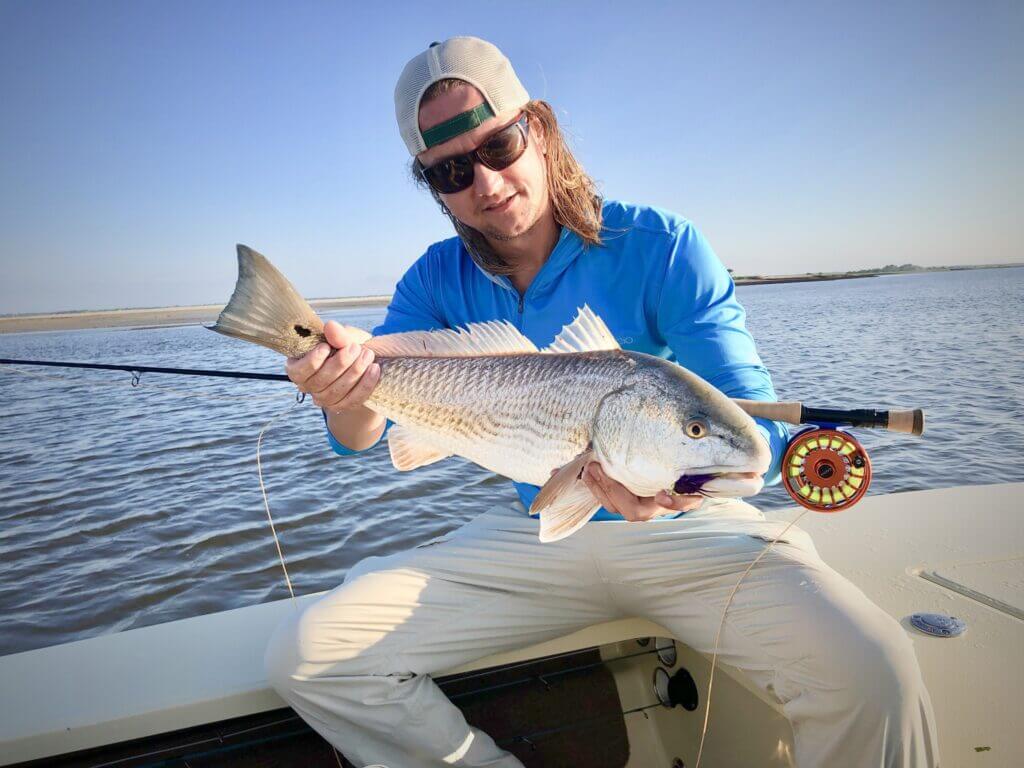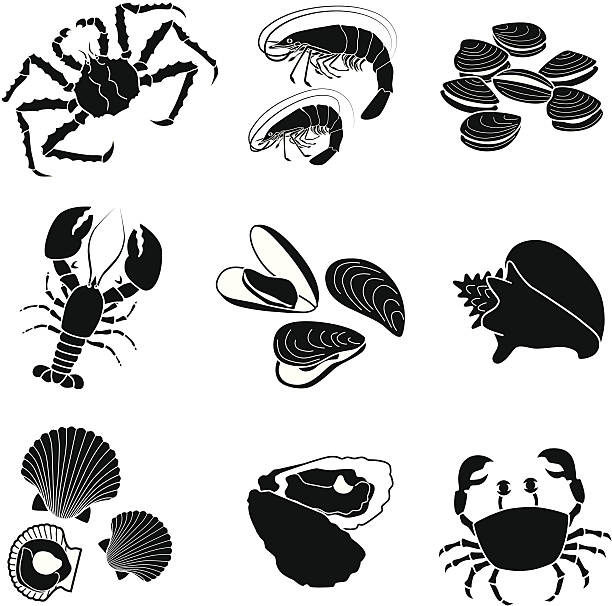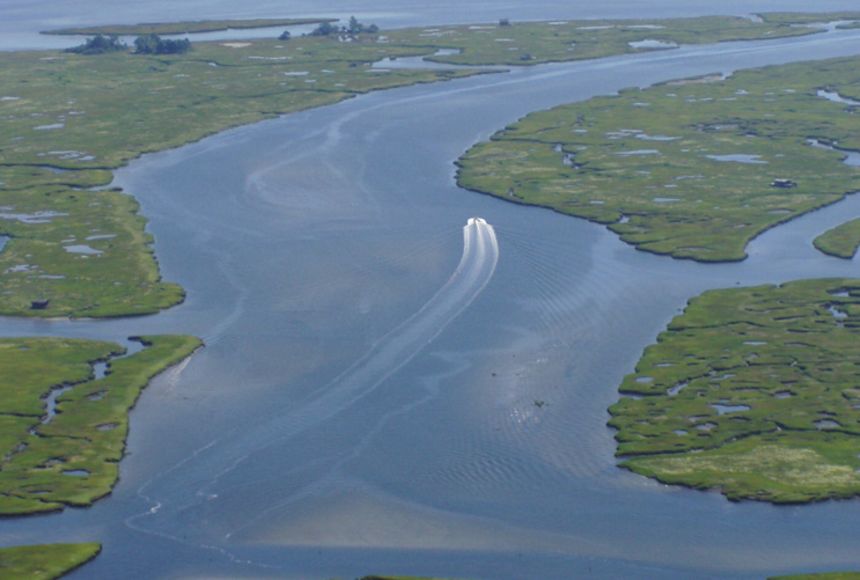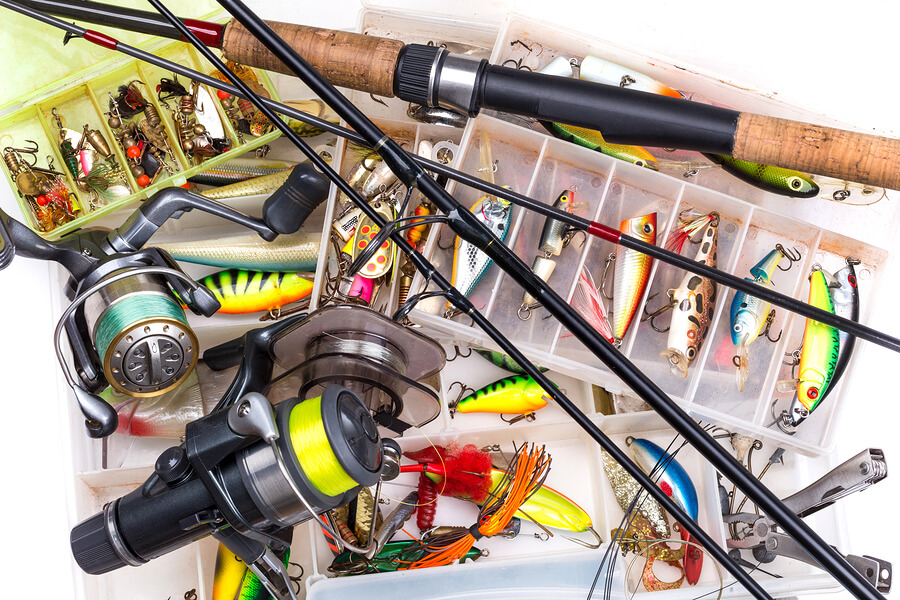
Hey there, fellow fishing fanatics! If you’ve ever dreamed of landing a copper-coloured beauty with a tail that could power a small boat, you’re in the right place. We’re talking about the redfish, a prized game fish that’s not only a blast to catch but also makes for a delicious dinner. So, grab your rod, reel in your excitement, and let’s dive into the world of redfish fishing! By the end of this guide, you’ll be equipped with the knowledge and tactics to outsmart these feisty fish and fill your cooler with memories (and maybe a few fillets).
Before we even think about casting a line, we need to get inside the mind of a redfish. Trust me, understanding their behaviour is like having a secret decoder ring to their underwater world. It’s the difference between casting blindly and strategically placing your bait right where those redfish are hungry and ready to bite.

Redfish are like the buffet enthusiasts of the sea. They’re opportunistic feeders, meaning they’ll chow down on whatever looks tasty and is within reach. Their diet includes a wide variety of crustaceans, like shrimp and crabs, as well as baitfish, mullet, and even smaller redfish.
But here’s the thing: their feeding habits change depending on the season, tide, and water temperature. For example, in the spring and summer, when the water is warm, redfish are more active and aggressive feeders. They’ll often chase down baitfish in shallow water, creating a feeding frenzy that’s a sight to behold.
In the fall and winter, as the water cools, redfish become less active and their metabolism slows down. They’ll still eat, but they’ll be more selective and tend to hold in deeper water.

Redfish are adaptable creatures, but they do have their favourite hangouts. They’re often found in estuaries, marshes, grass flats, oyster beds, and around docks and bridges. They love structure, whether it’s natural or man-made, as it provides them with cover and ambush points for their prey.
I remember one time fishing in a Louisiana marsh. The tide was high, and the redfish were cruising the flooded grass flats. I was using a topwater lure, and the strikes were explosive. Redfish after redfish smashed my lure, sending water flying in all directions. It was an adrenaline-pumping experience that I’ll never forget.
Redfish aren’t homebodies; they like to travel. Their movements are often dictated by the changing seasons. In the spring, they migrate to warmer, shallower waters to spawn. In the summer, they spread out and can be found in a variety of habitats. As the water cools in the fall, they start to move back towards deeper water for the winter.
Understanding these seasonal movements is key to finding redfish throughout the year. For example, in the spring, you might focus your efforts on shallow flats and estuaries, while in the winter, you might target deeper channels and inlets.
Now that we’ve got a handle on redfish behaviour, let’s talk about the tools of the trade. Choosing the right gear can make all the difference in your success.

For redfish, I recommend a medium to medium-heavy spinning or baitcasting rod that’s 7 to 8 feet long. This will give you the power to cast long distances and handle the fight of a big redfish.
When it comes to reels, I prefer a spinning reel for its ease of use and versatility. But if you’re an experienced angler who prefers baitcasting reels, go for it! Just make sure your reel has a smooth drag system to tire out those powerful redfish.
Braided line is a popular choice for redfish fishing because of its strength, sensitivity, and thin diameter. I typically use 20- to 30-pound test braided line with a 20- to 30-pound fluorocarbon leader. The fluorocarbon leader is less visible to fish and more abrasion-resistant, which is important when fishing around structure.
Redfish aren’t picky eaters, so you have a wide range of options when it comes to lures and baits. Some of my favourites include:
Experiment with different lures and baits to see what works best in your area and under the current conditions.
Now that you’re armed with the right gear, let’s dive into some proven techniques for catching redfish.
The most basic technique for redfish fishing is casting and retrieving your lure or bait. But there’s more to it than just chucking your lure out there and hoping for the best. You need to vary your retrieval speed, experiment with different actions, and pay attention to the depth at which you’re fishing.
One of my favourite retrieves for redfish is a slow, steady retrieve with an occasional twitch of the rod tip. This mimics the movement of injured baitfish, which redfish find irresistible.
Sight fishing for redfish is one of the most exciting ways to catch these fish. It involves spotting redfish in shallow water, usually by looking for their tails, wakes, or mudding activity. Once you spot a fish, you carefully cast your lure or bait in front of it and hope it takes the bait.
Sight fishing requires stealth and precision, but the reward is worth it. There’s nothing quite like the adrenaline rush of seeing a redfish inhale your lure and then feeling the power of its fight.
Redfish love to hang out around structure, such as docks, piers, jetties, and oyster beds. These structures provide them with cover and ambush points, as well as a steady supply of food.
When fishing around structure, it’s important to understand how current flows around the structure and where baitfish are likely to congregate. You can then position yourself to cast your lure or bait into the strike zone.
Learning to read the water is like unlocking a secret language that tells you where the fish are hiding. Look for signs of redfish activity, such as baitfish schools, bird activity, and subtle changes in water movement.
Pay attention to the tides as well. Redfish are more active during moving tides, especially incoming tides, when baitfish are pushed closer to shore.
Redfish fishing can be a game of patience. There will be times when the fish just aren’t biting, no matter what you try. Don’t get discouraged! Keep trying different techniques and locations, and eventually, you’ll find the fish.
Remember, persistence pays off. The more time you spend on the water, the more you’ll learn about redfish behaviour and the better you’ll become at catching them.
Redfish are a valuable resource, and it’s important to practice catch and release whenever possible. This ensures that future generations of anglers can enjoy the thrill of catching these magnificent fish.
When releasing a redfish, handle it with care. Wet your hands before touching the fish, and avoid squeezing its belly or gills. Use a dehooker to remove the hook quickly and gently, and then release the fish back into the water as soon as possible.